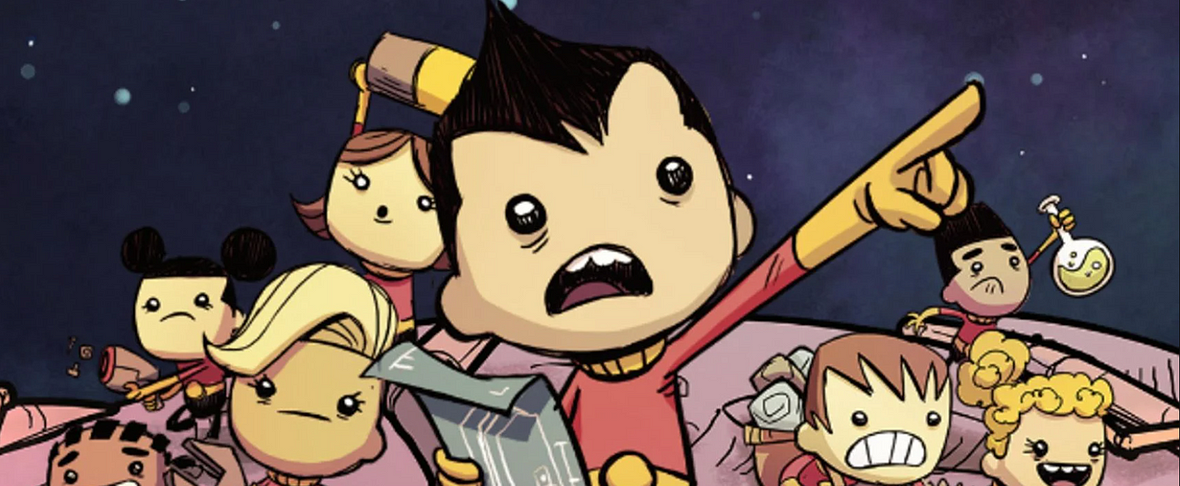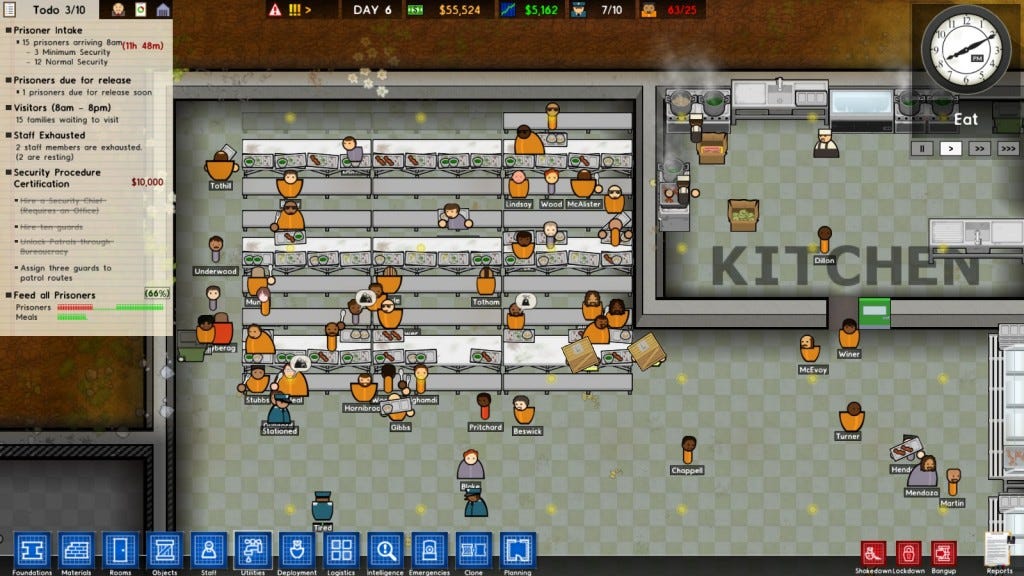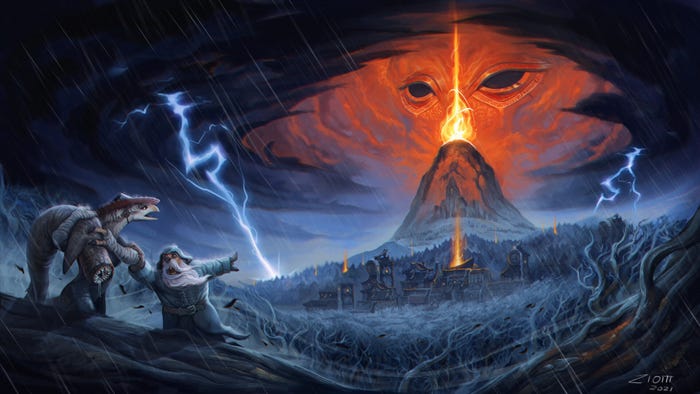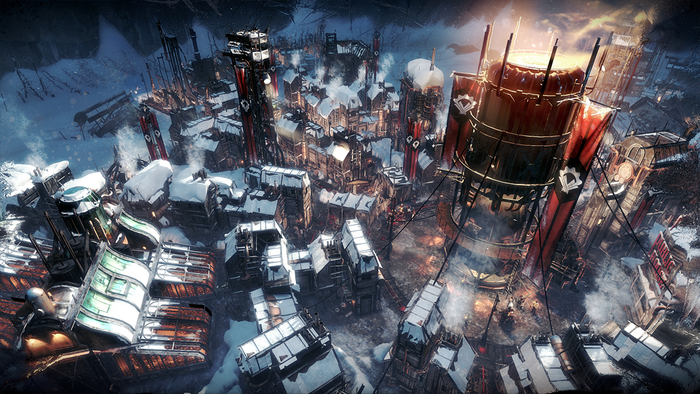
Featured Blog | This community-written post highlights the best of what the game industry has to offer. Read more like it on the Game Developer Blogs.
Early Access has proven to be a popular and viable option to release and develop a game by for indie developers. For today, we're going to look at what it means in the current market and the steps you need to take to have a successful early access game.


Early Access in the right hands can be one of the most effective strategies for developing a game for an indie developer. When it goes right, you can earn a profit on a game while still making it and raising awareness for your game at the same time. Not only that but you can get free playtesting and a live reaction from your market about your game, which is worth its weight in gold. But just like with Kickstarter, the days in which you could fumble through and still reasonably succeed are over. Today, we’re going to talk about how you approach making an early access game work.
What Early Access Means
Before we get to the main topic, for people who don’t know what we’re talking about with early access today, here is a brief primer. Since Valve added the option, early access is the option to release a game while in development for people to buy and play in whatever version you have available. The idea is that consumers get to play and help influence the game’s development, and the designers are earning money to help support the game while getting feedback.
That feedback is huge for designers, and studios like Klei Entertainment have been the poster child for using early access and benefiting from it. Being able to go directly to your consumer base to see if they like your game — and earning money while designing it — is a win-win. There have been plenty of games released in the past decade that owe their success to using early access as an almost “soft launch” to iron out issues and fix problems before they began.
However, much like the gold rush period of Kickstarter and crowdfunding for games, early access requires an understanding of the market and your own game to succeed.
The Right Games for Early Access
To begin with, not every game or genre works best for early access. Anything that is linear or story-driven should not go on early access. The reason is you don’t want someone to play through the roughest version of your game and never come back to it. Part of what we’ll be talking about in a minute has to do with keeping and growing momentum when it comes to an early access strategy.
Linear titles are horrible when it comes to playtesting because you’re never going to get people to come back to replay a game that they have already finished. Remember: Consumers are not the same as paid testers, they have no allegiance to you or your game. If you want dedicated people to look over your game, you will need to pay them for their time and effort (shameless plug, I offer my services for advising on game design).
The best games for early access are the ones that are meant to be replayed, and why roguelike or roguelike-inspired titles have flourished on early access. Anything that is meant to have variance between plays is a suitable candidate for early access. Duskers was a dirty tech-inspired action roguelike who managed to iron out a lot of bugs and improve its procedural generation thanks to the multitude of fans playing and combing over every inch of the game. That last point is important: a developer on their own or a small pool of testers would never be able to examine every aspect of their design in a reasonable amount of time while still building it.
Another good example would be multiplayer games; especially when it comes to building a community and testing server load. No multiplayer game wants to launch without a community of people already there and wanting to play the game. With that said, it’s easy to assume that the earlier you go on early access the better, but that takes us to the next point.
When to go on Early Access
Early Access, just like Kickstarter, requires proper planning for it to work right. Many developers when early access began immediately pushed whatever their first prototype was onto the platform hoping to get paid for it. What we have seen is that the games that succeed in early access plan things out before they go on to early access.
I’m about to say something that may not make much sense: Your game should go on early access when the gameplay is as polished as it will be at 1.0. Whatever version of your game that goes on early access should be the best representation of the gameplay and core gameplay loop. You can have unfinished assets, content that’s missing, and bugs to fix, but I should know on day one exactly what this game is going to be like to play.
There are two points that are important here. Some of you may think that that’s impossible to do, but I turn to games like Darkest Dungeon, Dead Cells, Slay the Spire, Oxygen Not Included, Monster Train, and other cases where the very first version of the game on early access (or public beta) was already impressive and enjoyable to play. These are games that we all knew very quickly that they were going to be solid winners when they were done.

the quality of your gameplay should represent what 1.0 of your game will look like
The other point is that the games that start off with serious problems, often, those issues remain into 1.0.
I’ve revisited many games that were in early access that I had problems with and the very same issues with the gameplay loop remained.
You should not be going onto early access when you are still trying to figure out what your game is going to be about. Likewise, grand changes to the core gameplay loop during early access represents a serious red flag.
The goal of early access isn’t to right a sinking ship, but to make something great better, and for that, you need to plan ahead.
The Early Access Plan
Early access success is about maintaining momentum from start to finish, and that requires coming up with a plan for how to develop your game on it. Some developers think that early access means endless development, but that is one of the easiest ways to fail. Consumers want to see two things when they look at a game on early access:
A title that is being reviewed positively.
A title that is getting consistent updates
Before you go on early access, you need to decide how frequent development updates are going to be. You need to set a schedule that works for you, and more importantly, you can adhere to it easily. Consumers get very leery if they see a game in early access with no updates to it. Likewise, you need to communicate frequently to the consumers about what you’re doing. If you are on early access, you should not be going more than a week without news posts to the fans.
The only way you’re going to keep people invested in your game and keep newcomers coming in is to provide them with a good product and can show that more is coming. Many developers today lay things out on a roadmap to let consumers know what’s in the game, what’s coming, and most importantly: when it will be in there. Mystery is something you want to avoid when it comes to early access. No one on your forum should be saying the following: “Is this game dead?”
Planning is important, but there is a limit on how far to plan with early access. Some developers will put up a plan on the unannounced precondition that the game continues to earn money -- DO NOT DO THAT!
Do not rely on early access as a form of crowdfunding or an alternative to Kickstarter. Whatever is on your roadmap should be what you are able to do at that moment in time. If your game blows up and you can add additional content, that’s a positive, but do not over-promise in early access. For example: Space Base DF-9 by Doublefine was a colossal failure thanks to them essentially lying and then trying to cover up said lie of years of content promises that they canceled. Conversely, Prison Architect received several more months of early access support by Introversion following the breakout success and public support the game got.

Prison Architect was the first early access success, and became the benchmark for a successful campaign
If you can continue to add content to your game and are able to comfortably live off the support of your fans and consumers, then you can stay on early access as your game gets bigger and better. However, there must always come a time for a game to leave early access.
Ending Early Access
Leaving early access is a big deal, and often marks either a big success or a major failure by the developer. No matter what game you are designing, there should always be a point where you can say your early access is finished. When we say “finished” that doesn’t mean you can never work on the game ever again. For many developers, 1.0 simply meant the game was at retail quality, and they would continue to develop content for it.
Version 1.0 of your game is a big deal and should be a major marketing push to let people know your game is done; do not waste the PR opportunity there. When it comes to leaving early access there are two groups of ways, we’ve seen that we can divide into good and bad:
The Good Ways
Developer leaves a successful early access period with a major piece of content to excite the fans and bring back people who have played the game before
Developer leaves early access by finishing up last-minute bug fixes and pushes the game to its retail version
As a developer, while both options are good, you want your 1.0 “to pop” for consumers. This not only gets them excited, but it gets people who cover games excited and interested to see what big finale you have added to your finished game. As an important note, if you do leave content to be revealed at 1.0, make sure you still get that play tested by your own internal pool of testers. You don’t want 1.0 to be marred by releasing unpolished content.
With that said, here the ways you should avoid no matter what:
The Failures
Developer calls their game finished, despite not meeting all roadmap plans (or deleting their plans) and fans feel betrayed
The game had a rough early access and had to be released because the developer ran out of money to continue support. Often, this leads to negative PR and the fans turning on the developer
Despite a promising start, the developer never managed to finish the game and it ended up abandoned. This is usually the nail in the coffin for the studio
Making the Most of Early Access
For our final point, it’s important to get your expectations right about going on early access. Just like with all areas of game development, early access is not a guaranteed success. Putting your game on it means that people are going to be able to comment and criticize your game, and if you aren’t comfortable with that level of scrutiny then do not put your game on there.
Just because you are on early access doesn’t mean that all your PR and additional work is done. Everything needs to work together for you to have the best chance to succeed. And sadly, even if you do things right, you may not get people interested in your early access game.
As I said further up, I am available for consulting and giving more in-depth looks at indie games. The reason why I’m saying this is that a big part of early access is ironing out issues. While experimenting with new designs or elements in early access is not always the best, it’s better to know in early access if your game is appealing to consumers. Just like with PR, there is also the point of waiting too long to go on early access. You don’t want people to spot major issues with your game and it’s too late in development to fix them easily.
There are plenty of consumers who have been burned by early access games, and you do not want your game to further convince people to stay away from it.
To end on: Can you think of any major red flags that immediately dissuade you from looking at an early access game? And what signs do you want to see from an early access game to support it?
If you enjoyed my post, consider joining the Game-Wisdom discord channel open to everyone.
Read more about:
Featured BlogsAbout the Author(s)
You May Also Like







